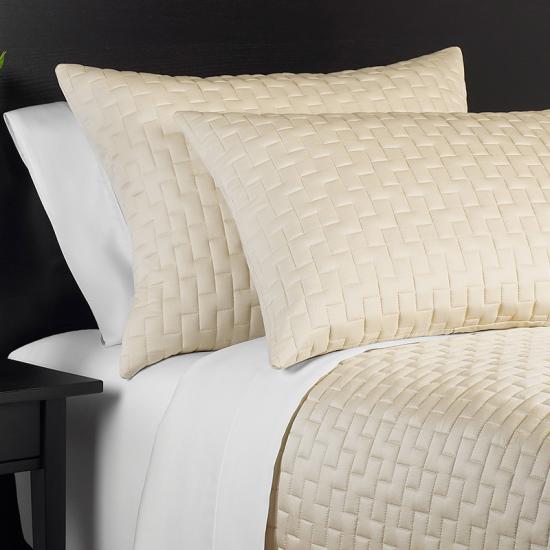The ideal filling weight and loft for polyester microfiber quilted pillows depend on a few factors, including personal preferences for comfort, sleep position, and the level of support desired. Here's a breakdown of what typically works best for different sleeping needs:
Filling Weight
The filling weight refers to the amount of polyester microfiber used in the pillow. This affects the pillow's overall firmness, comfort, and support. A pillow with too little filling may lack support, while one with too much filling may be too firm.
Light Fill (Low Weight): Ideal for people who prefer a softer pillow or for stomach sleepers who need minimal support. A light fill will provide a more plush and less structured feel.
Weight Range: Typically between 400-600 grams (14-21 oz) for standard pillows.
Medium Fill (Medium Weight): Best for back sleepers who need a balance between comfort and support. It offers moderate loft and cushioning without being overly soft.
Weight Range: Typically around 600-800 grams (21-28 oz).
Heavy Fill (High Weight): Ideal for side sleepers who need higher loft and more support to keep the neck aligned with the spine. A higher weight ensures the pillow maintains its shape and provides firm support.
Weight Range: Typically around 800 grams (28 oz) or more.
Loft
Loft refers to the height of the pillow when it is in use. The loft affects how much support the pillow provides and is largely based on the thickness and filling amount. A higher loft pillow typically offers more support, while a lower loft provides a softer feel.
Low Loft: Suitable for stomach sleepers who require a flatter pillow to prevent neck strain. Low loft pillows typically have a height of around 2-3 inches when compressed.
Medium Loft: Ideal for back sleepers who need a balance between comfort and support. Medium loft pillows generally range from 3-5 inches.
High Loft: Best for side sleepers, as they need more elevation to keep the head and neck aligned with the spine. High loft pillows typically range from 5-7 inches, or even higher in some cases.

Factors to Consider
Sleep Position: The best loft and weight will depend on whether you're a stomach, back, or side sleeper. For example:
Side Sleepers: Tend to benefit from a higher loft and medium to heavy fill to fill the gap between the head and mattress.
Back Sleepers: Prefer a medium loft and a medium fill for support without pushing the head too far forward.
Stomach Sleepers: Typically require a low loft and light fill to prevent the neck from being strained.
Firmness Preference: Some people prefer soft, plush pillows (light fill, lower loft), while others prefer firmer, more supportive pillows (heavy fill, higher loft). Adjusting the filling weight and loft can help fine-tune the pillow's firmness to individual preferences.
Temperature Regulation: Polyester microfiber pillows tend to sleep cooler than down alternatives, but a higher fill weight and loft might lead to more heat retention. Opting for a medium-weight fill with a medium loft can strike a balance for those sensitive to heat buildup.
Loft and Fill Adjustment Over Time
Polyester microfiber pillows tend to retain their shape and loft longer than traditional down pillows, but some settling of the fill can occur with use. Many quilted pillows allow for adjustment of the loft through a combination of filling weight and quilting patterns to help maintain the ideal shape and support over time.
General Recommendations for Different Sleepers:
Side Sleepers: Look for a pillow with medium to high loft (4-7 inches) and a medium to heavy fill (600-800 grams or more).
Back Sleepers: Aim for a pillow with medium loft (3-5 inches) and a medium fill (600-800 grams).
Stomach Sleepers: Opt for a pillow with low loft (2-3 inches) and a light fill (400-600 grams).
Combination Sleepers: Those who move between sleeping positions may prefer an adjustable loft pillow with medium fill to accommodate different sleeping postures.















.jpg?imageView2/2/format/jp2)
.jpg?imageView2/2/format/jp2)
.jpg?imageView2/2/format/jp2)
.jpg?imageView2/2/format/jp2)
.jpg?imageView2/2/format/jp2)
.jpg?imageView2/2/format/jp2)
.jpg?imageView2/2/format/jp2)

.jpg?imageView2/2/format/jp2)